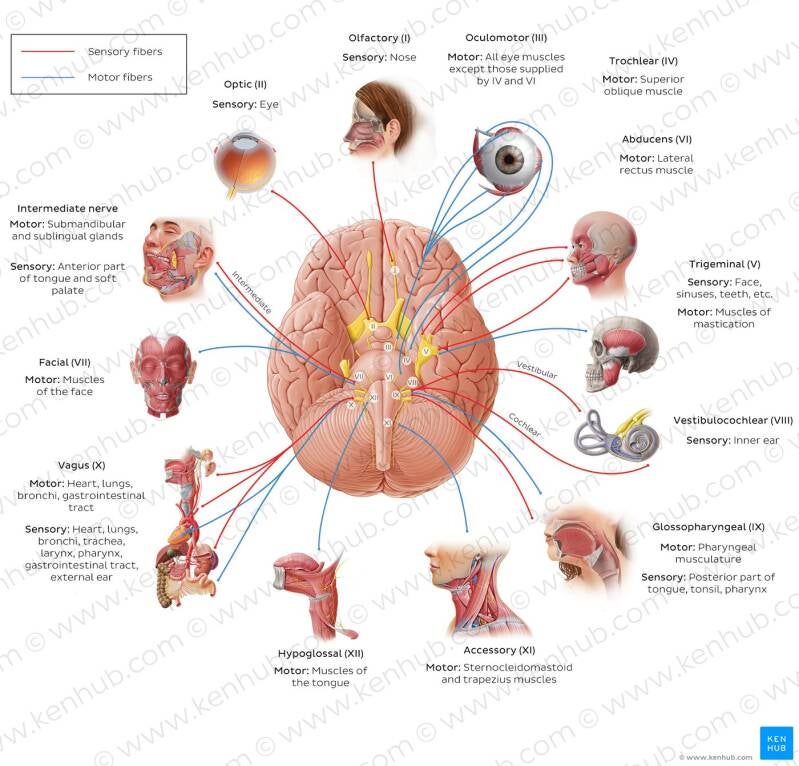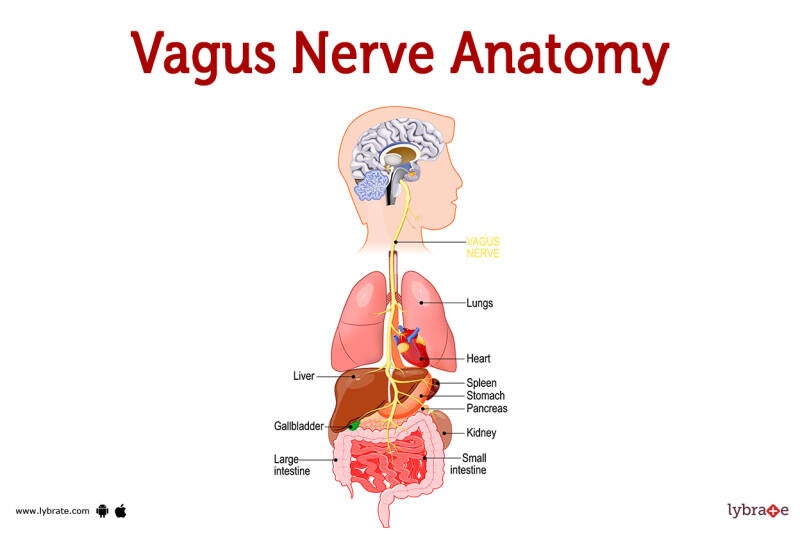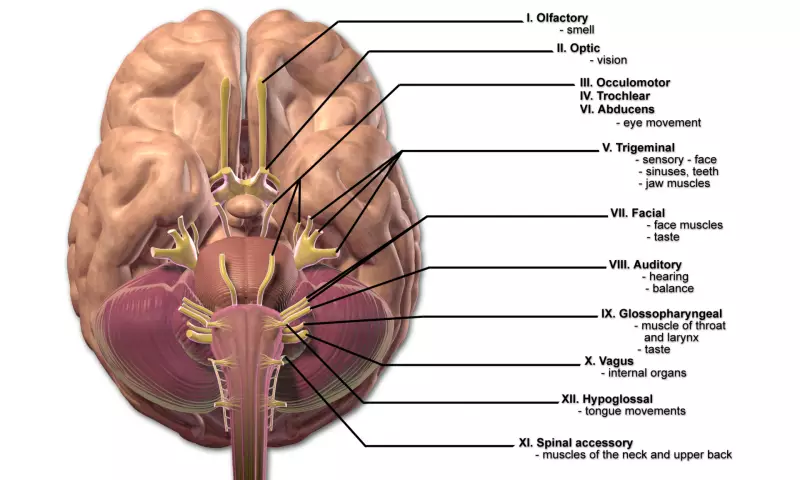Twelve cranial nerves
There are twelve pairs of cranial nerves that emerge directly from the base of the brain. There are 31 pairs of spinal nerves.
The cranial nerves mainly connect the brain to the head and neck region. The spinal nerves continue to split into branches throughout the body.
Numbering
The numbering of the cranial nerves is related to the order in which they arise from the brain stem. The numbering runs from front to back.
Roman numerals
The cranial nerves are numbered with Roman numerals. I =1, II =2, III =3, IV = 4, V =5, VI =6, VII =7, VIII =8, IX =9, X =10, XI =11, XII =12.
Abbreviations
The abbreviation for a nerve is N from the Latin word nervus.
Sometimes the abbreviation CN is used. This is the abbreviation for cranial nerve. For example, CN X is the 10th cranial nerve or vagus nerve.

Tenth cranial nerve or vagus nerve
Vagus nerve is a very versatile cranial nerve. It is also the longest. It runs through the neck and neck to the chest and abdominal cavity.

https://www.lybrate.com/topic/vagus-nerve-image
Motor, sensory or autonomous? Afferent or efferent?
In which direction does the information go? From or to the brain? Or both?
- ⇊ If a nerve carries information from the brain to the ends of the body (periphery), it is called an "efferent" (motor) nerve.
⇊ Motor cranial nerves are: N III, IV, V, VI, VII, IX. - ⇈ Conversely, if the information from the body (periphery) goes to the brain, this is an "afferent" (sensory) nerve.
⇈ Sensory cranial nerves are: N I, II, V, VII, VIII, IX. - ⇅ If information goes from the brain to the body and from the body to the brain, it is a mixed/autonomic nerve with combined sensory and motor function.
⇅ Mixed/Autonomic cranial nerves are: N III, VII, IX and X.
Spinal nerves are always mixed nerves.
Visceral efferent nerve
This type of nerve nerve transmits information to smooth muscle, cardiac muscle, or glands. Visceral is often (there are exceptions) synonymous with autonomic in the autonomic nervous system.
Somatic efferent nerve
This type of nerve transmits information to the skin or to the skeletal muscles. General somatic efferent nerve pathways contain information from the proprioception (information about movement and position) of muscles, tendons and joints.
Mnemonics
To help you remember the order of the twelve nerves, see for mnemonics here.
What are the consequences of nerve damage?
The explanation of what consequences there may be due to damage to the 12 cranial nerves is explained on our neurological examination page.

https://commons.wikimedia.org/w/index.php?curid=28761813